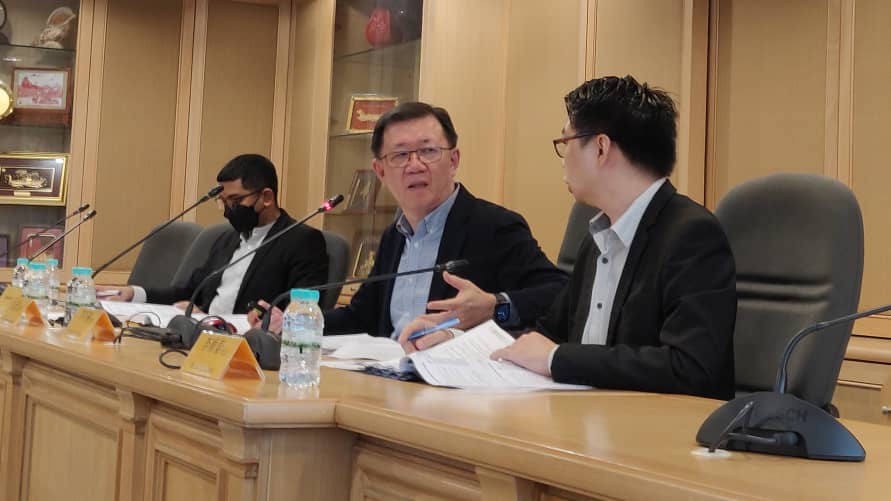Serc
Despite semicon revival, Malaysia still seen needing E&E ecosystem boost to climb value chain
The Borneo Post
SERC Media Briefing on Quarterly Economy Tracker (Jul-Sep 2023)


To view Executive Summary of QET, please follow the link below:
2023Q3: The Reforms We Need in 2024 Budget
Related news:
- Budget 2024 requires fiscal consolidation for Malaysia to avoid fiscal cliff, says SERC
The Edge - Lay path for GST return in 2024 budget, says think tank
Make travel easier for Chinese, Indian tourists, says think tank
Free Malaysia Today
- Painful measures are a necessity
The Star
- 李兴裕预测财政部将呈“痛苦预算案” 建议政府重启消费税
东方日报
- 我國成長預測再被砍 “下半年充滿挑戰”
中国报
- 中总:必要但不受欢迎 预算案料祭这些措施
南洋商报 - 中总季度经济追踪报告 | 李兴裕:财案或有稍负面措施 建议重启消费税
星洲日报 - 经济专家:长期津贴恶性循环 增产 提高收入 才是上策
星洲日报
Please click the box below to download the full report and presentation slides:
Weaker ringgit draws more Johoreans to work in Singapore, leaving manpower shortages in state's key sectors
Channel News Asia
The Edge
2023Q3: The Reforms We Need in 2024 Budget
For news coverage, please proceed to Activity page.
https://www.acccimserc.com/activities/activity-20231002
A. WORLD ECONOMIC OUTLOOK UPDATE
THE GLOBAL ECONOMY STILL CHUGGING ALONG
-
Global economy on track but not yet of the woods. We expect the global economy to remain on track to end the year between 2.7% and 2.9% in 2023 (3.5% in 2022) amid still resilient labour markets in advanced economies to support consumer spending
-
We continue to see a mixed bag of economic indicators, suggesting that global growth remains weak. Global manufacturing sector saw a continued downturn in August 2023 for the 12th consecutive month, although there were signs of easing. The PMI for the services sector also eased, albeit still staying above the 50-point expansion mark
-
We expect the US economy to have a soft landing in 2023 amid lingering risks that the restrictive monetary policy stance and tighter credit conditions will gradually drag down economic growth in 2024. While the GDP rose 2.1% q-o-q annualised in Q2 (2.2% in Q1 2023) on a rebound in fixed investment, consumer spending slowed, and exports contracted.
-
The euro area economy expanded by 0.1% q-o-q in Q2 (0.1% in Q1), thanks to easing supply chain pressures and lower energy prices amid still high inflation. The combination of higher interest rates and renewed restraint in government spending are threatening to temper expansion and raise the risk of an economic downturn.
-
Japan's economy grew by an annualised 4.8% q-o-q in Q2 (3.2% in Q1), which was lower than preliminary estimates of 6.0% due to a fall in capital expenditure and private consumption on falling wages.
-
China’s economy has been registering data disappointments since April due to cautious consumer spending, contractions in fixed asset investment, falling exports, and a deepening stress in the real estate sector.
-
Price pressures level off, but divergence between countries. Slower economic growth, tighter monetary policies and supply chain improvements have contributed to price stabilisation as measured by the easing of headline inflation readings in some advanced and emerging economies. However, there are divergent inflation trends in advanced economies due to differences in the economic performance, labour and energy markets.
-
Global interest rates to stay high for longer. Global interest rates are expected to remain high for longer, given the risk of frequent adverse supply shocks.
B. MALAYSIA ECONOMIC OUTLOOK UPDATE
IS THE WORST REALLY BEHIND US?
-
Can Q3 GDP be better than Q2? Malaysia’s economic growth slowed further to 2.9% y-o-y in Q2 2023 from 5.6% in Q1 2023 (7.1% in Q4 2022), marking the third consecutive quarter of moderation and the slowest growth since Q3 2021. Real GDP growth expanded slower by 4.2% in 1H 2023 (6.8% in 1H 2022 and 10.4% in 2H 2022).
-
GDP growth to average 4.0%-5.0% in 2H 2023. Our tracking of high-frequency data has shown that the Malaysian economy has moderated in recent months, especially demand for our exports while consumer spending has normalised.
-
Manufacturing sales mirrored weaknesses in global demand, which has declined for a second consecutive month in July 2023, with a negative growth rate of 3.0% y-o-y (-4.0% in June). The decline was influenced by various products, notably the petroleum, chemical, rubber, and plastic sub-sector as well as wood products.
-
Exports recorded six consecutive months of contraction, with a significant decline of 18.6% y-o-y in August 2023, dragged by negative growths across all the sectors (manufacturing, agriculture, and mining sectors).
-
We expect Bank Negara Malaysia to keep the domestic interest rate (as benchmarked by the overnight policy rate) at 3.00% for the rest of the year as concerns about economic and business conditions take precedence over inflation for now.
-
Three key risks stand out regarding the domestic economic outlook in 2H 2023 and 2024: (i) continued slowing of the US economy on the lag effects of higher interest rates and downside risks to China's economy; (ii) inflation and cost of living pressure; (iii) continued high business costs due to the weakening ringgit; employment costs, climate change as well as ESG compliance costs.
THE REFORMS NEEDED IN THE BUDGET 2024
-
The 2024 Budget will still be restrictive yet responsible spending as the Government reaffirmed its commitment towards a continued fiscal reduction path, probably to between 4.0% and 4.5% of GDP in 2024 from an estimated 5.0% in 2023 (-5.6% of GDP in 2022).
-
The 2024 Budget must strike the right balance between dealing with immediate challenges and setting Malaysia up for the next leg by:
-
Strengthening fiscal and spending priorities.
-
Responsible and targeted cost of living relief and cash assistance for those that need it most.
-
Funds allocation, grants and incentives for key sectors drivers of sustainable growth.
-
ESG and net zero carbon emissions agenda.
-
Increasing the compensation of employees.
-
Please click the box below to download the full report and presentation slides:




